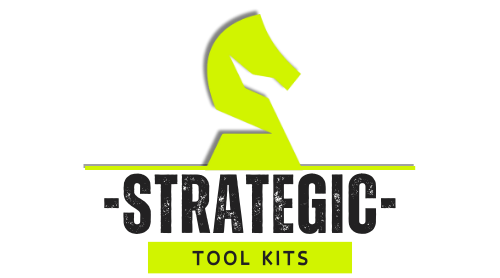If you have ever dreamed of launching a product, maybe a sleek smartwatch, a new skincare line, or a local delivery app, you’ve probably asked yourself one big question: How many people would actually buy this?
That’s where the idea of the available market comes in. It’s the difference between what looks possible and what’s actually within reach.
In short, your available market is the number of people who both want, can afford, and can access your product. It’s not everyone in your industry, not everyone online, and not everyone in your city, but the group that realistically could become your customer tomorrow.
Understanding that number is one of the most critical parts of any business plan because it helps you avoid the biggest startup trap of all: believing everyone is your customer.
Why the “Available Market” Matters
When companies make market forecasts, they often talk about TAM, SAM, and SOM: total addressable market, serviceable available market, and serviceable obtainable market.
The “available market” sits right in that middle space, after you’ve filtered out people who have no interest or ability to buy, but before you get to your specific sales targets.
It’s the space where opportunity meets realism.
Say you’re introducing a $300 smartwatch. Out of a country with 10 million people, maybe 6 million are tech-savvy adults, 3 million can afford one, and 900,000 actually live in areas where your brand ships. Those 900,000 people, not the full 10 million, are your available market.
Knowing that number keeps your projections honest, your marketing efficient, and your investors confident that you understand your market’s limits.
How the Available Market Fits Into the Bigger Picture
Marketers often visualize markets as a funnel, where each level narrows the pool of potential customers. Here’s how the hierarchy usually looks:
Market Type
Definition
Typical Question It Answers
TAM (Total Addressable Market)
The total demand for your product if everyone could buy it
How big could this possibly get?
Potential Market
The people who show interest or need the product
Who wants this?
Available Market
The people who want it and have the income and access
Who can actually buy this?
Qualified Available Market
The subset that also meets legal or licensing criteria
Who’s eligible to buy it?
Served Market (SAM)
The group your company can realistically reach
Who can we serve right now?
Target Market
The specific segment you’re focusing on
Who are we aiming our efforts at?
Penetrated Market (SOM)
The portion that has actually been bought from you
Who are our current customers?
In most industries, your available market is a fraction of your TAM, often between 20% and 50%, depending on income, regulation, and access barriers.
How to Identify Your Available Market (Step by Step)

Finding your available market is part art, part science. It requires logic, a bit of math, and a realistic view of who your product truly fits.
Step 1: Start with the Big Picture
Begin with your total addressable market, the largest possible universe. For consumer goods, this could mean the total number of adults in your country.
For B2B, it could mean the total number of companies in a given industry.
If you’re selling accounting software to small businesses, for example, your TAM is the total number of registered small firms.
Step 2: Filter by Interest and Relevance
Next, ask who actually wants your product. Not every small business owner needs accounting software; maybe only those with employees or complex books do.
Narrow it down to those who fit your use case.
Step 3: Filter by Income and Affordability
Now comes the economic reality. Some people might love your product, but simply can’t pay for it. Estimate how many potential buyers have enough disposable income or budget allocation to afford your offer.
For instance, if your smartwatch costs $300, but half of your audience earns under $15,000 per year, you might only count the top 50% as part of your available market.
Step 4: Filter by Access and Infrastructure

Next, remove anyone who can’t easily access your product due to geography, logistics, or regulations.
Maybe your e-commerce store doesn’t deliver to remote regions, or your app doesn’t work in certain countries. These barriers matter, and they shrink your available market.
Step 5: Apply Legal or Qualification Filters
Some industries require additional filters. If you’re selling medical devices, energy products, or financial services, buyers may need licenses or regulatory approval.
Those filters narrow your available market further into what’s called the qualified available market.
Step 6: Estimate the Size and Value
After filtering, estimate the number of people left and multiply it by your average price and purchase frequency.
The formula is simple but powerful:
Where:
- N = Number of qualified buyers
- P = Average price per unit
- Q = Average quantity purchased per buyer per year
So if 900,000 potential buyers could each buy one smartwatch every four years (0.25 units/year) at $300, your available market value is: 900,000 × 0.25 × $300 = $67.5 million per year.
That’s your realistic market, not the fantasy one.
Example: A Smartwatch Brand Launch
Let’s apply those steps in full:
Filter Stage
Criteria
Remaining People
Description
Total Population (TAM)
All adults 18–65
10,000,000
The full potential market
Interest Filter
Tech-savvy, wearable interest
6,000,000
People are open to the idea
Affordability Filter
Disposable income > $500/year
3,000,000
Those who can afford it
Access Filter
Distribution coverage (urban areas)
900,000
Those you can actually reach
Qualified Buyers
Smartphone users only
810,000
Final available market
Then multiply by price and usage rate: 810,000 × 0.25 × $300 = $60,750,000 annual available market.
That number tells you your business lives in a roughly $60 million pond, not a $3 billion ocean. But that’s a good thing. It’s specific, measurable, and actionable.
How to Analyze Market Potential Beyond the Numbers

Calculating the available market is the foundation. Analyzing market potential takes it further; it asks how that market might change, grow, or shrink over time.
When you analyze market potential, look at:
In short, market potential shows not just how big your opportunity is, but how big it can become.
Realistic Ratios: How Markets Shrink at Each Stage
It helps to visualize how each layer of filtering reduces your numbers:
Stage
Approx. % of Total
Notes
TAM (Total Addressable Market)
100%
Everyone who could theoretically use your product
Potential Market
60–70%
People who show interest or need
Available Market
20–50%
Those with interest, money, and access
Served Market (SAM)
10–30%
The segment you can actually reach
Target Market
5–20%
The audience you actively focus on
Penetrated Market (Actual Buyers)
1–5%
Your current customer base
This “funnel” makes it easier to see why realistic business forecasts shrink so fast from the top down, but that’s how you find your real opportunity.
Factors That Influence Available Market Size

Several forces shape the size and nature of your available market. Understanding them helps you forecast more accurately:
- Income distribution, how wealth is spread, determines how many people can afford your product.
- Price elasticity: The more price-sensitive your buyers are, the smaller your available market at higher price points.
- Competition and substitutes, A crowded field can split demand and limit your share.
- Distribution channels. If your logistics can’t reach certain areas, your effective market shrinks.
- Regulations, Licensing, age restrictions, or import limits can cut access.
- Technology and infrastructure, Internet access, smartphone ownership, and payment systems directly affect who can buy.
- Cultural behavior, some regions adopt new tech faster than others.
- Brand trust, A low-trust market can reduce available buyers even if interest exists.
When you combine all these, you get a far more nuanced picture of where real growth can happen.
Avoiding Common Pitfalls
Overestimating the available market is one of the most frequent mistakes entrepreneurs make. A few traps to watch out for:
Being realistic doesn’t make your dream smaller; it makes your strategy smarter.
Bringing It All Together
View this post on Instagram
At its core, the available market is about clarity. It tells you who you can actually serve, not just who you hope to reach.
By moving step by step, from total population to real buyers, you end up with a number grounded in data, not fantasy. Then, by analyzing market potential, you can forecast how that number will evolve as income rises, infrastructure expands, or culture shifts.
If you plan to pitch investors, design marketing campaigns, or just set your first sales target, your available market is the starting line.
Because in business, it’s better to own 10% of a real market than dream about 0.01% of an imaginary one.

